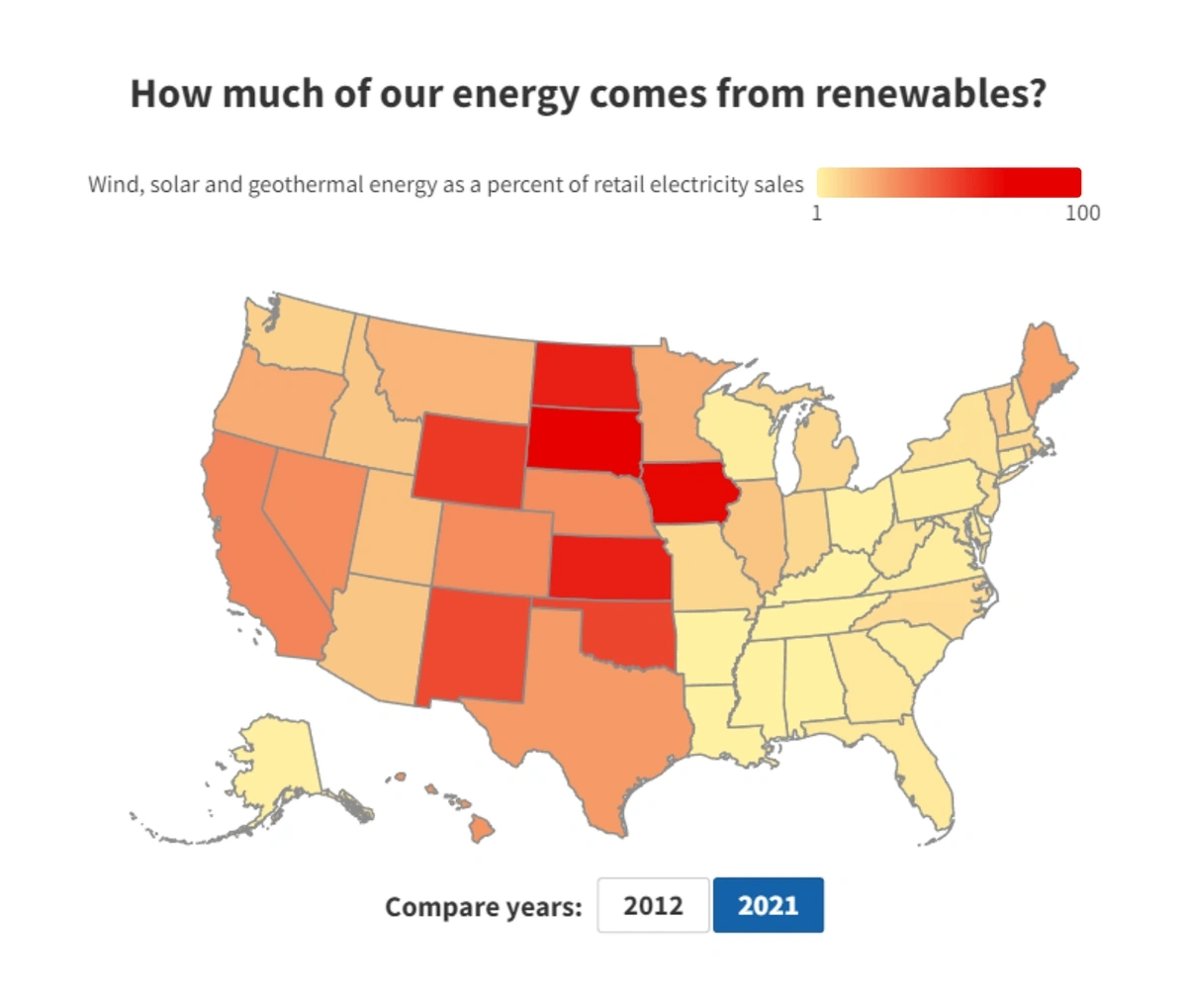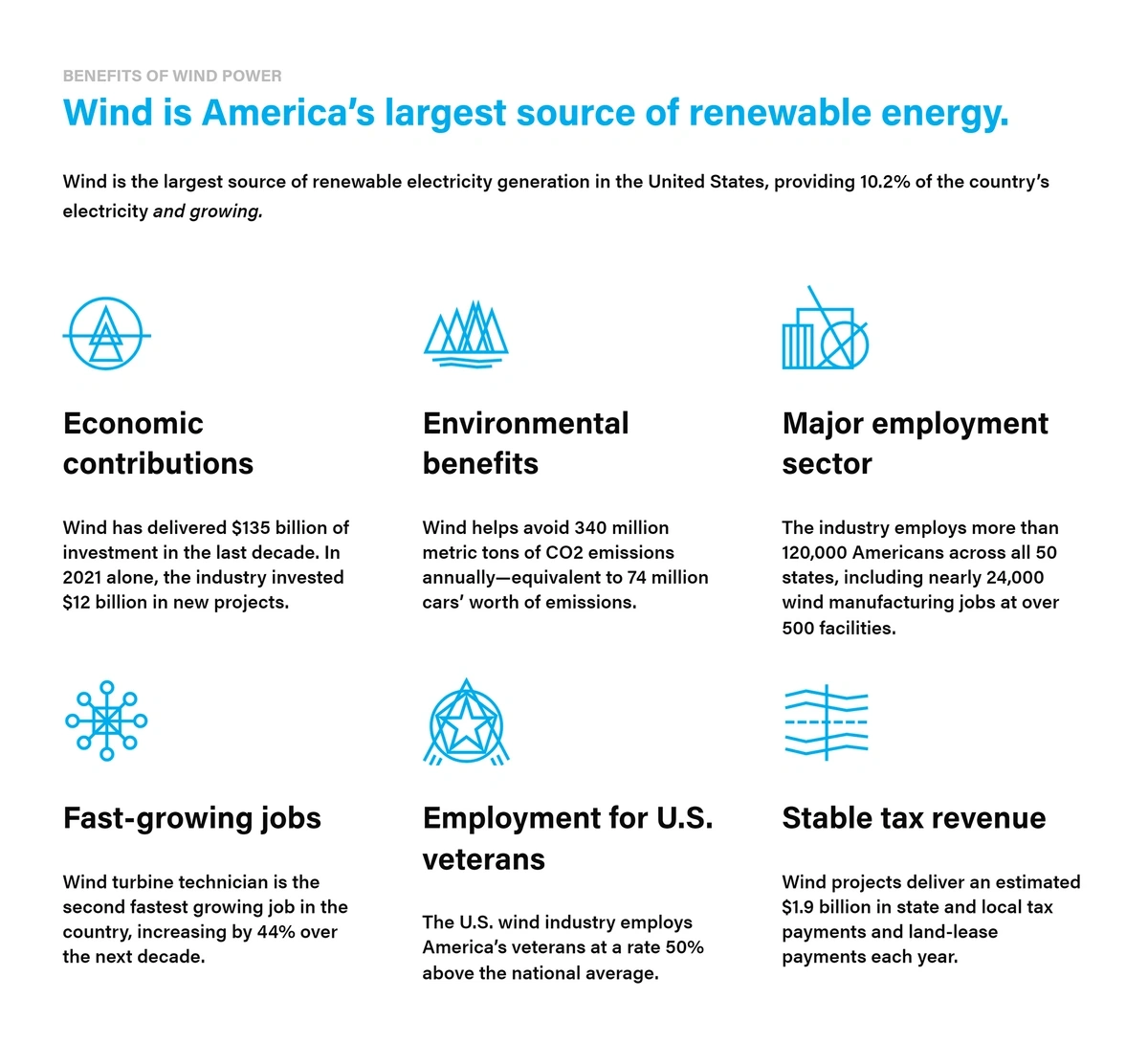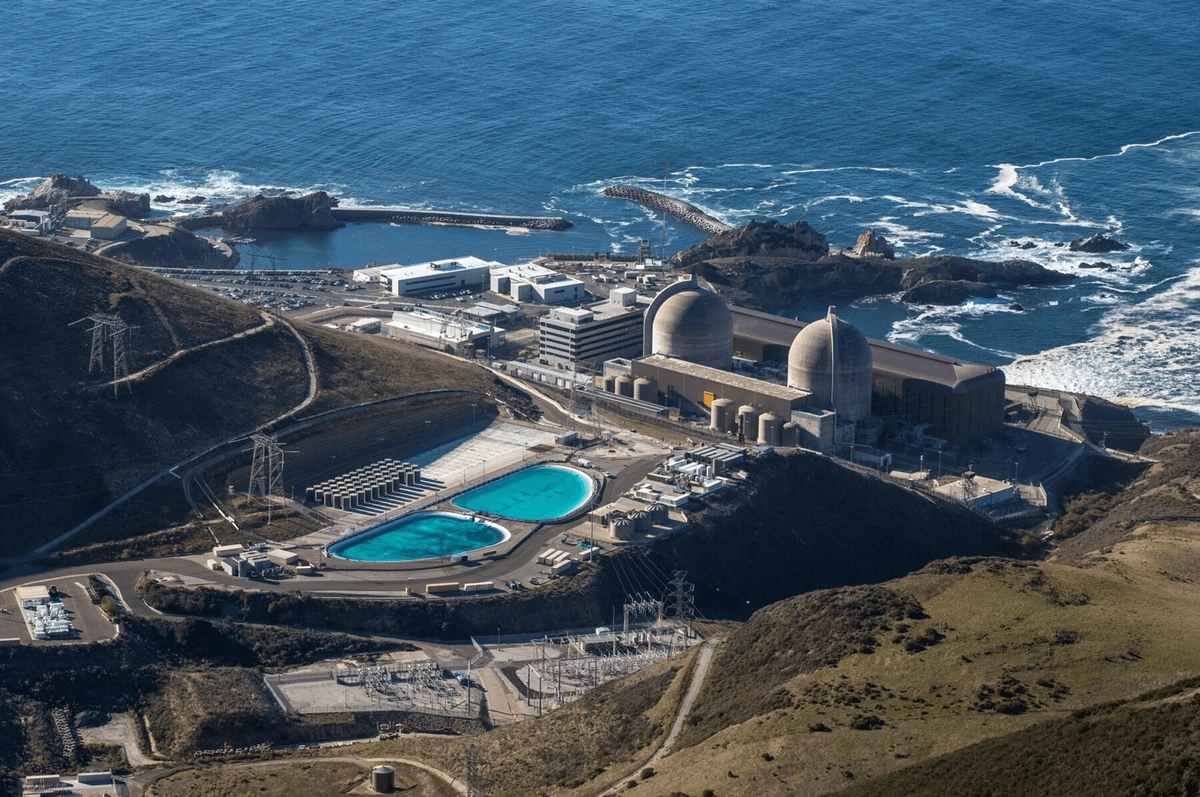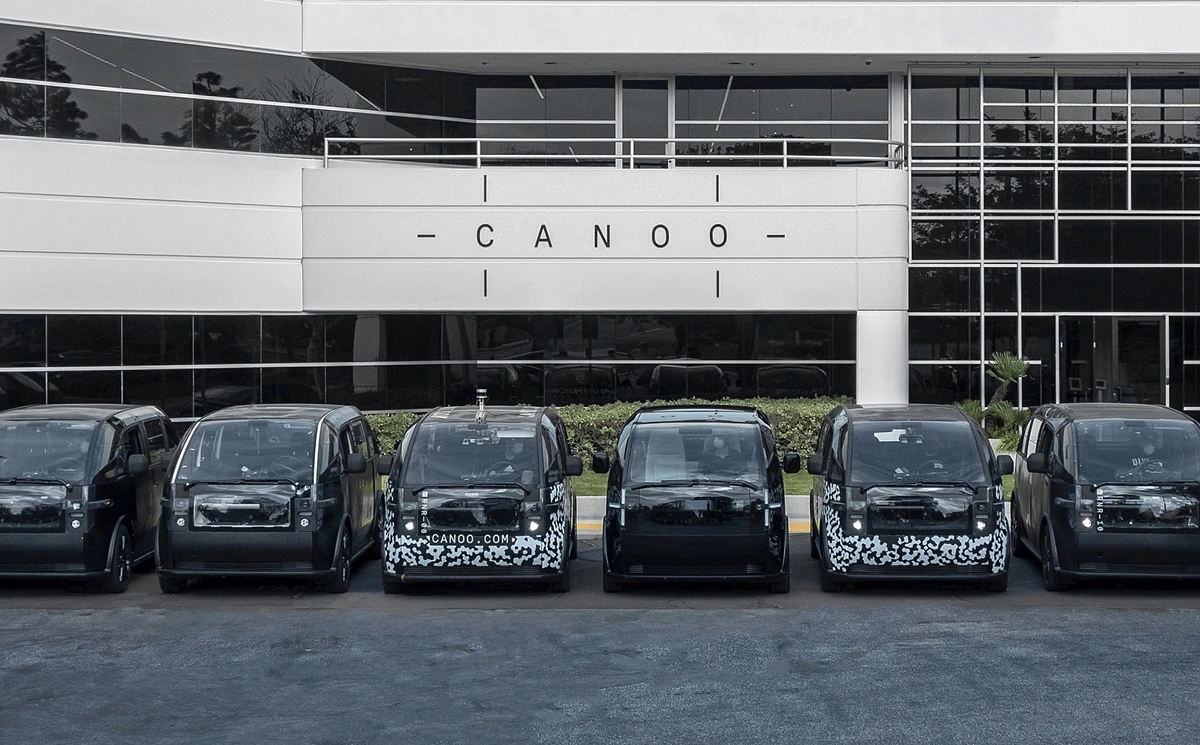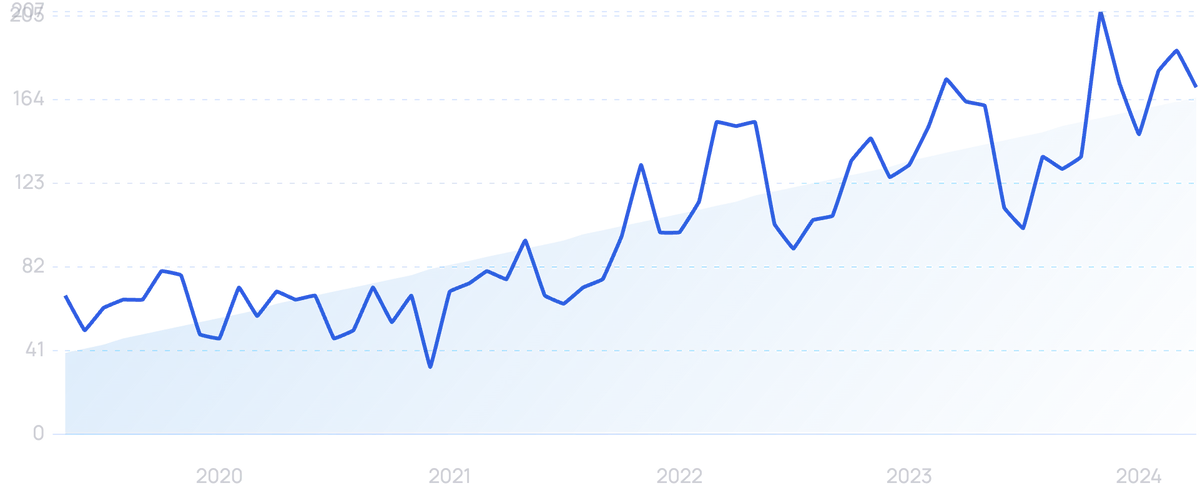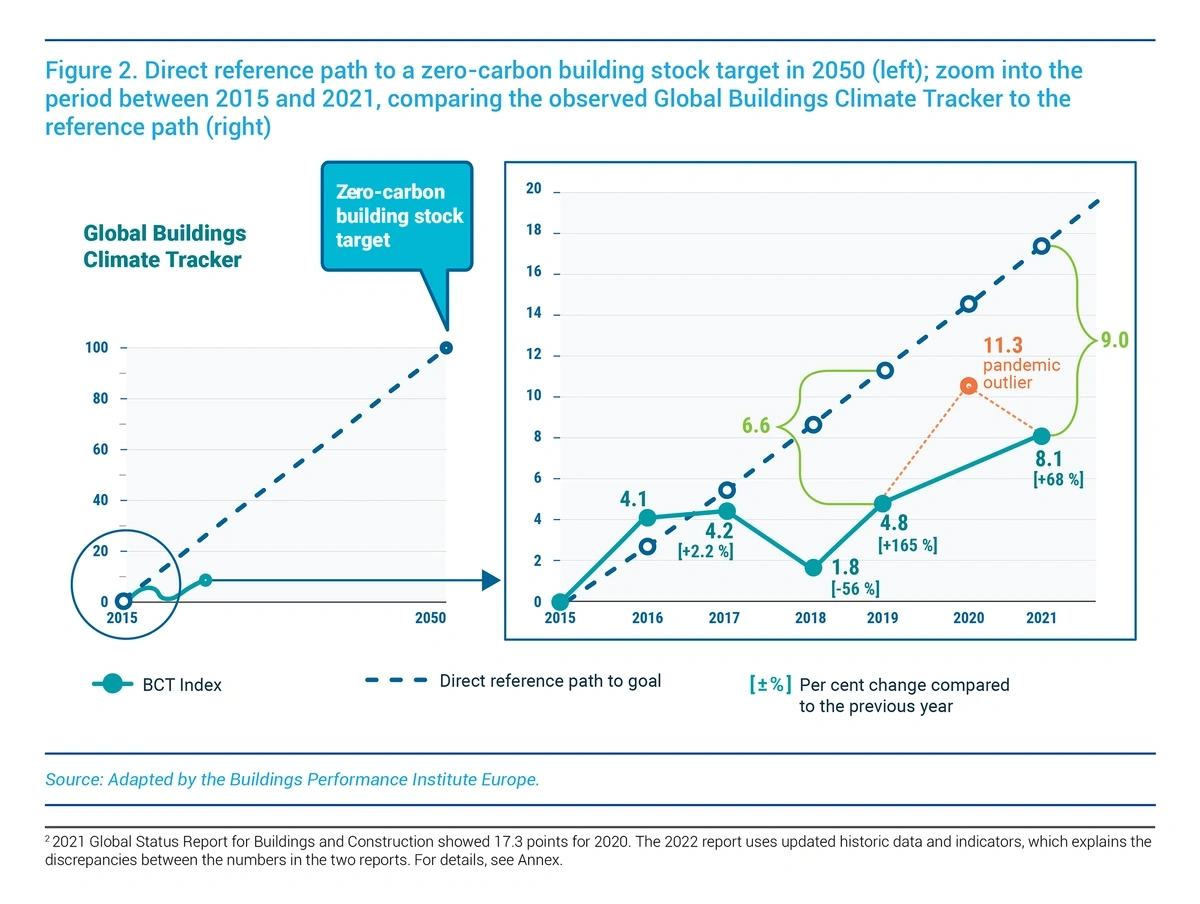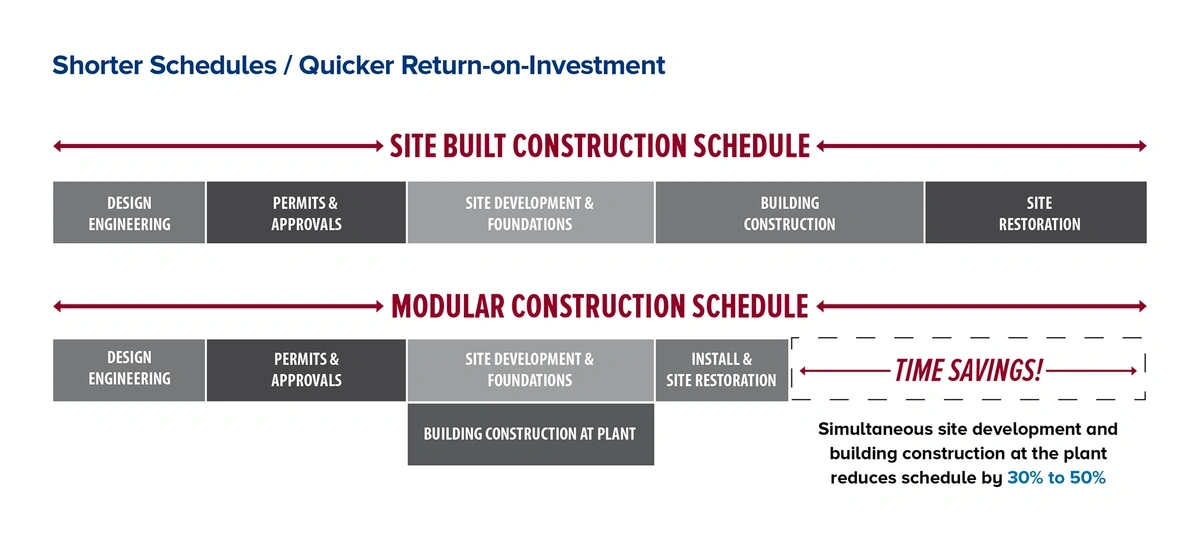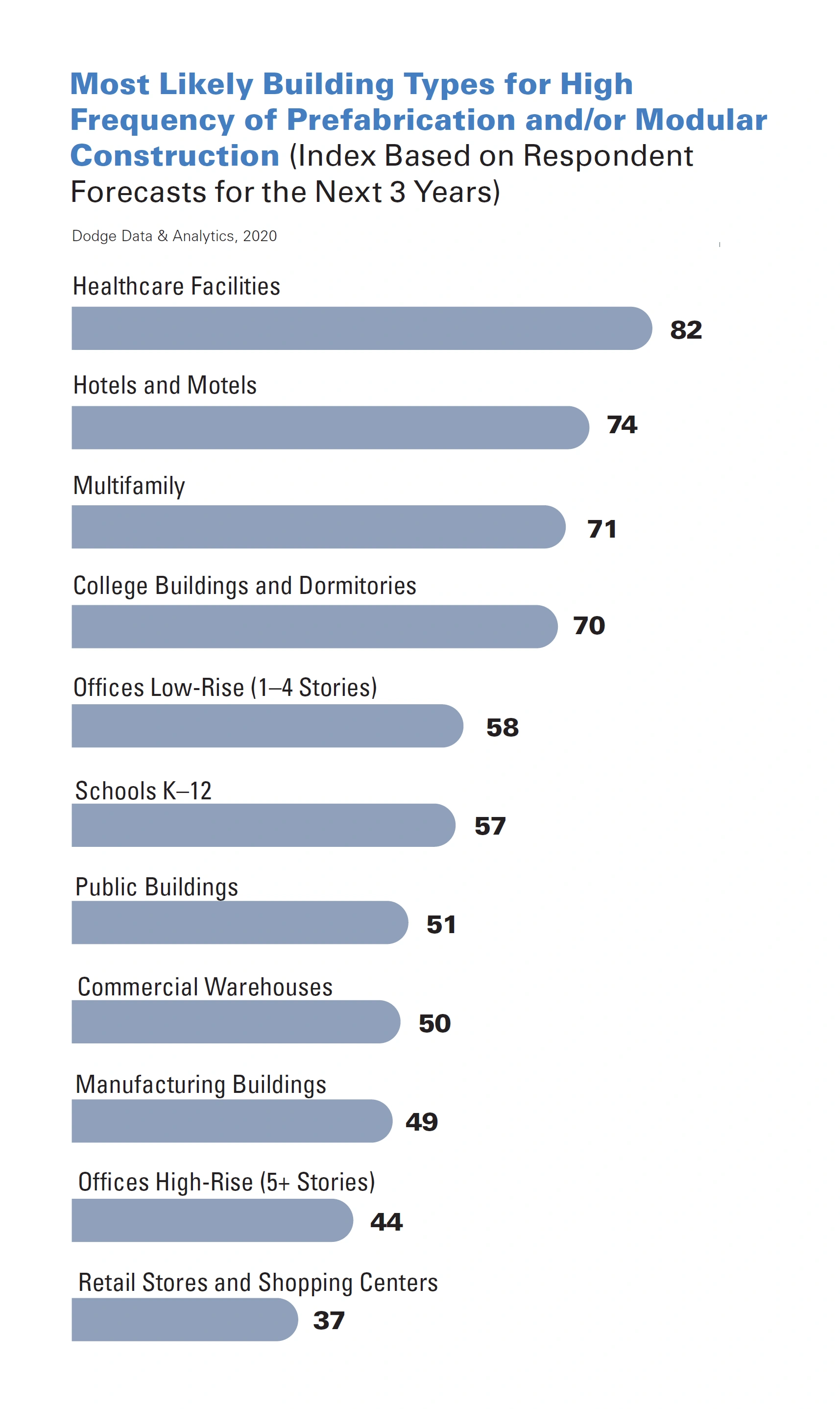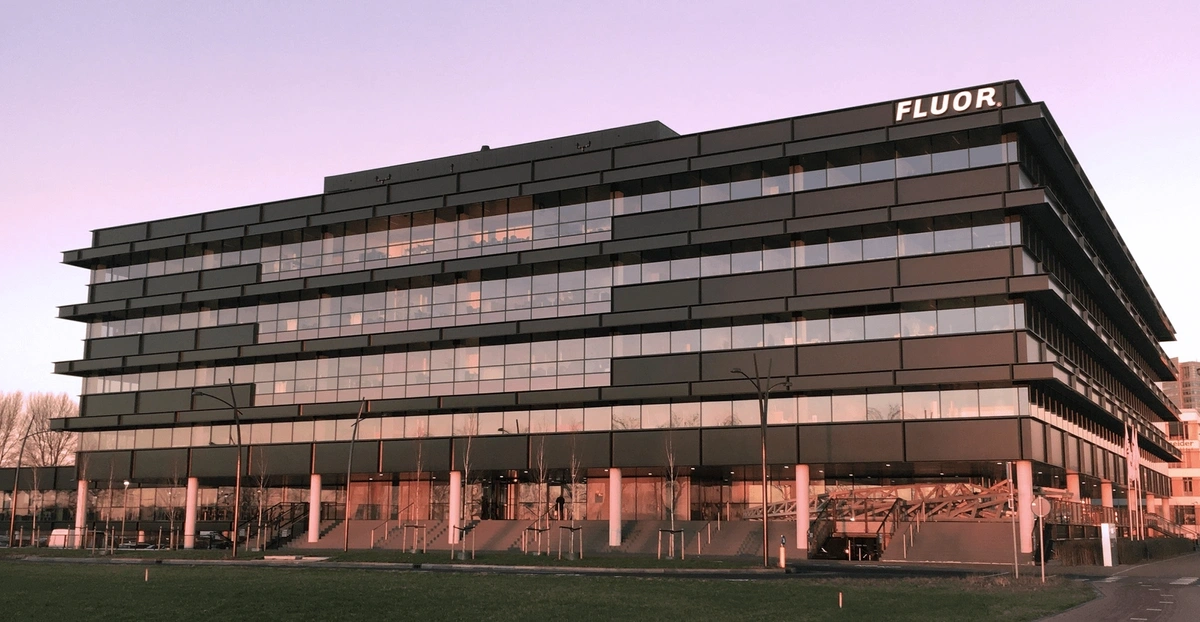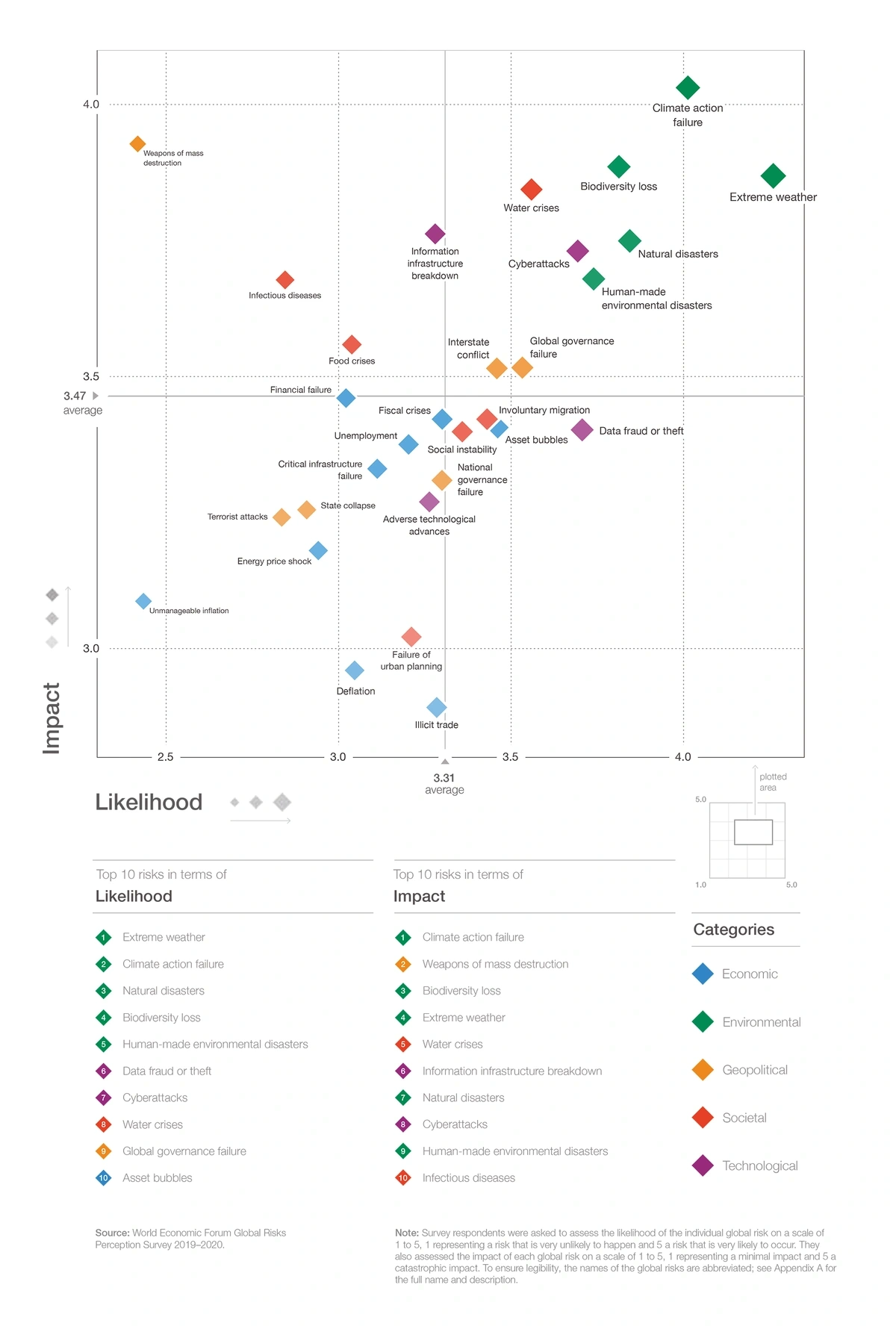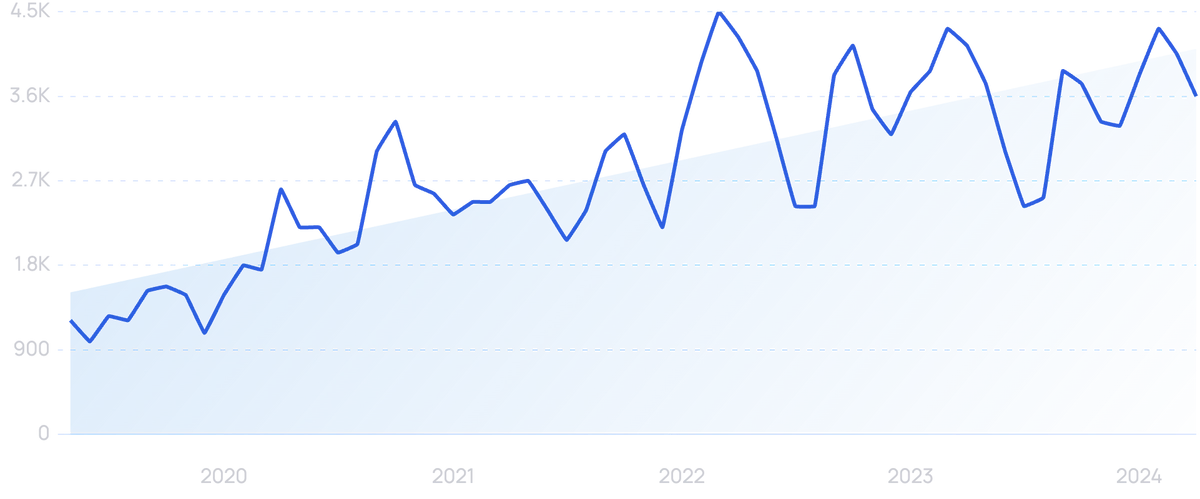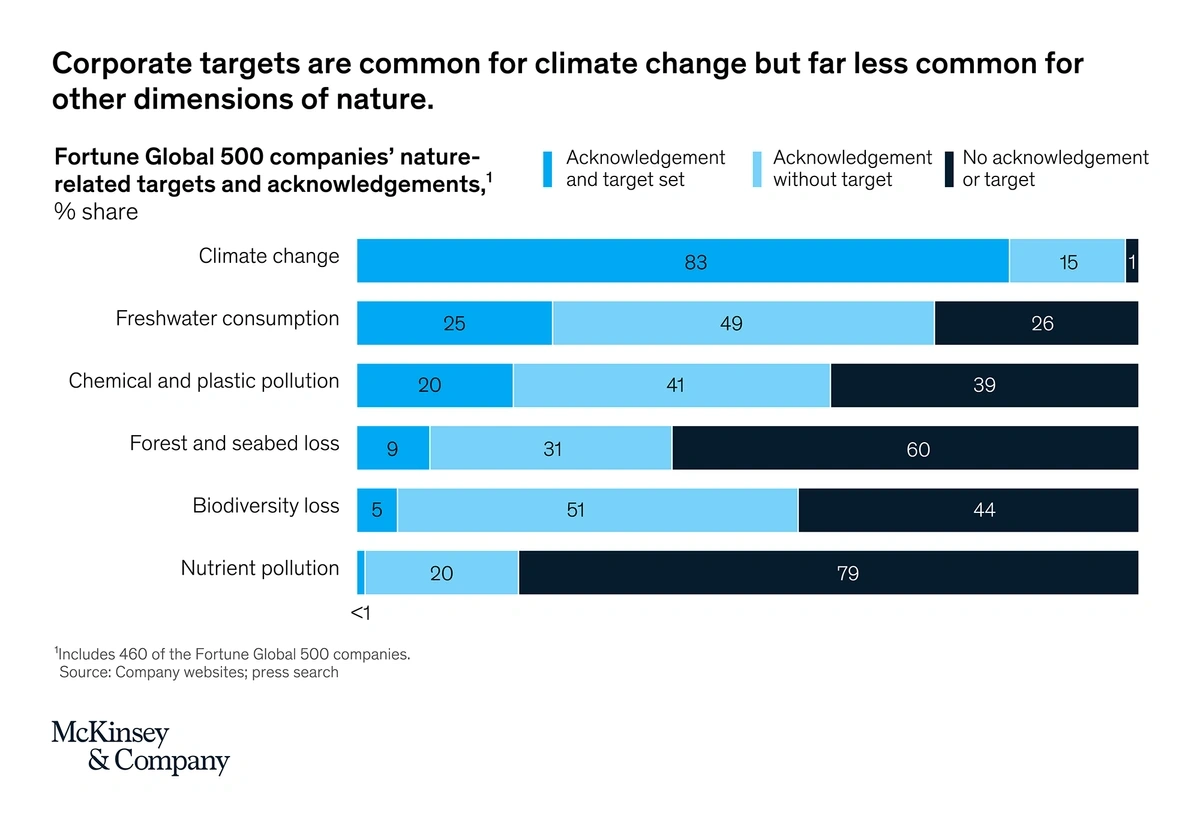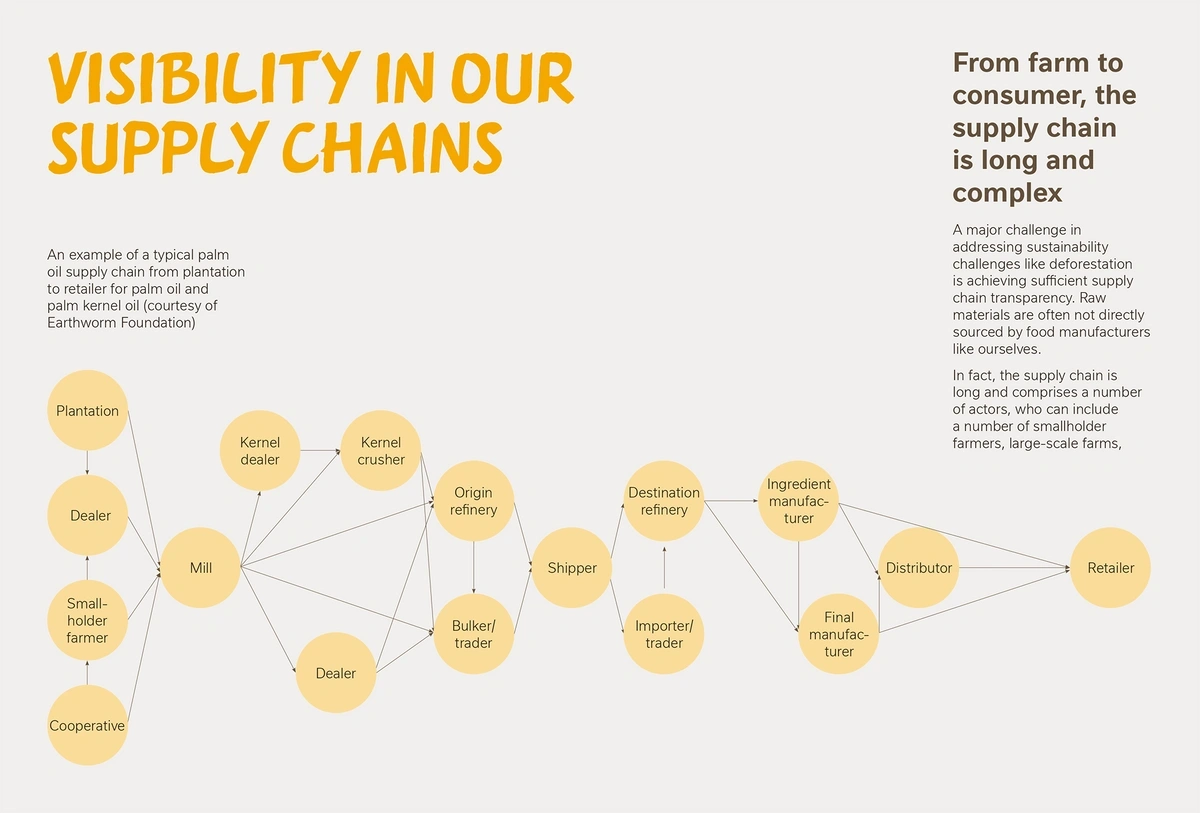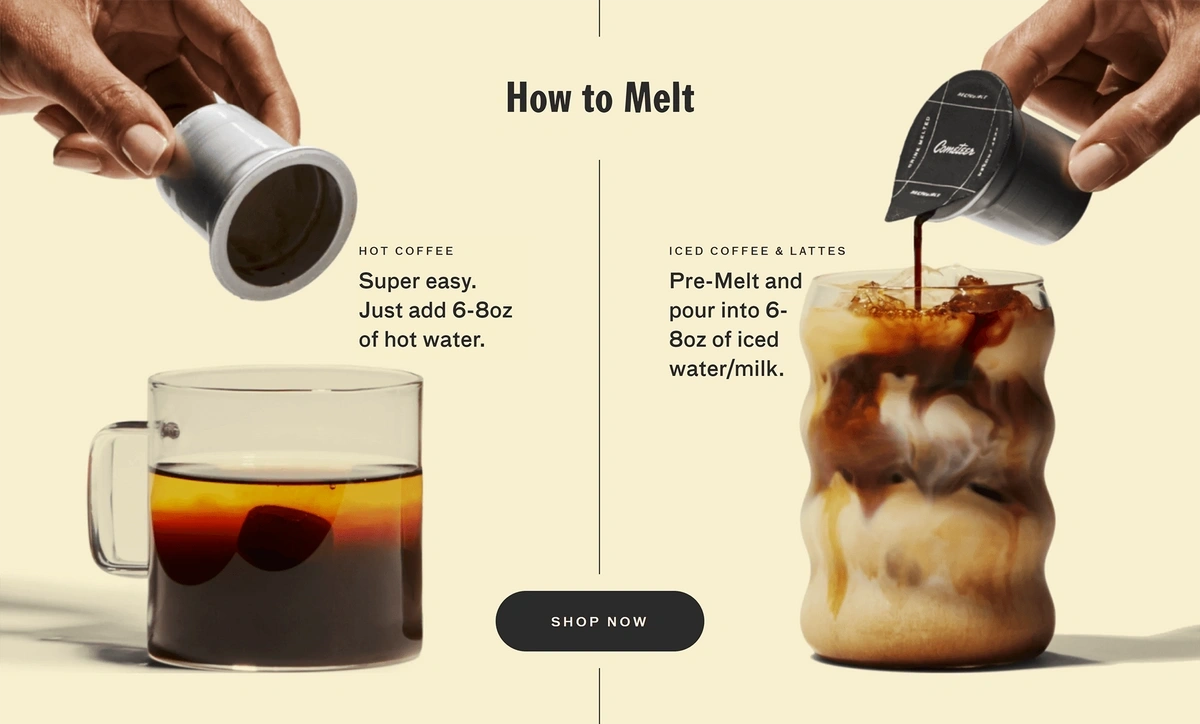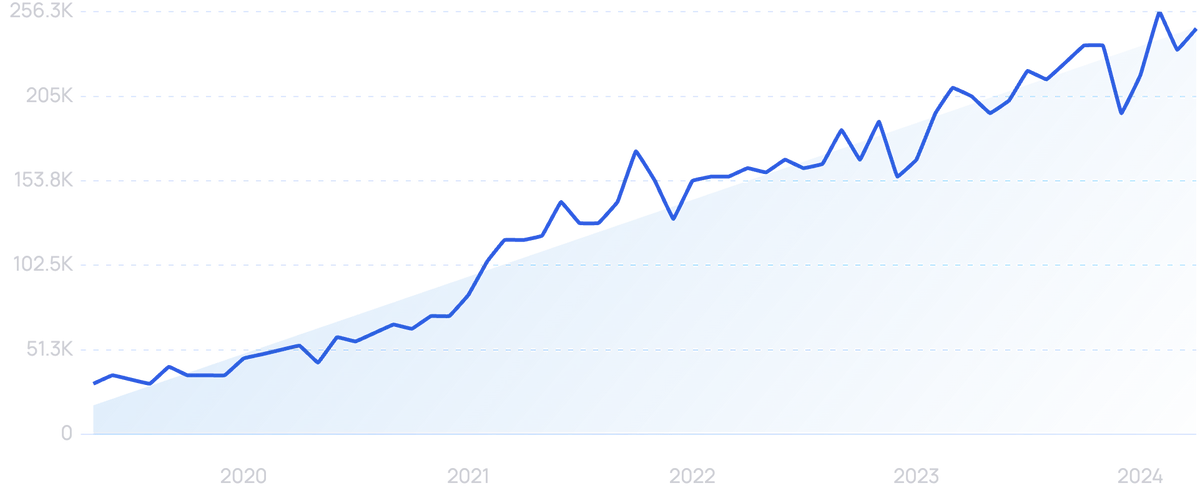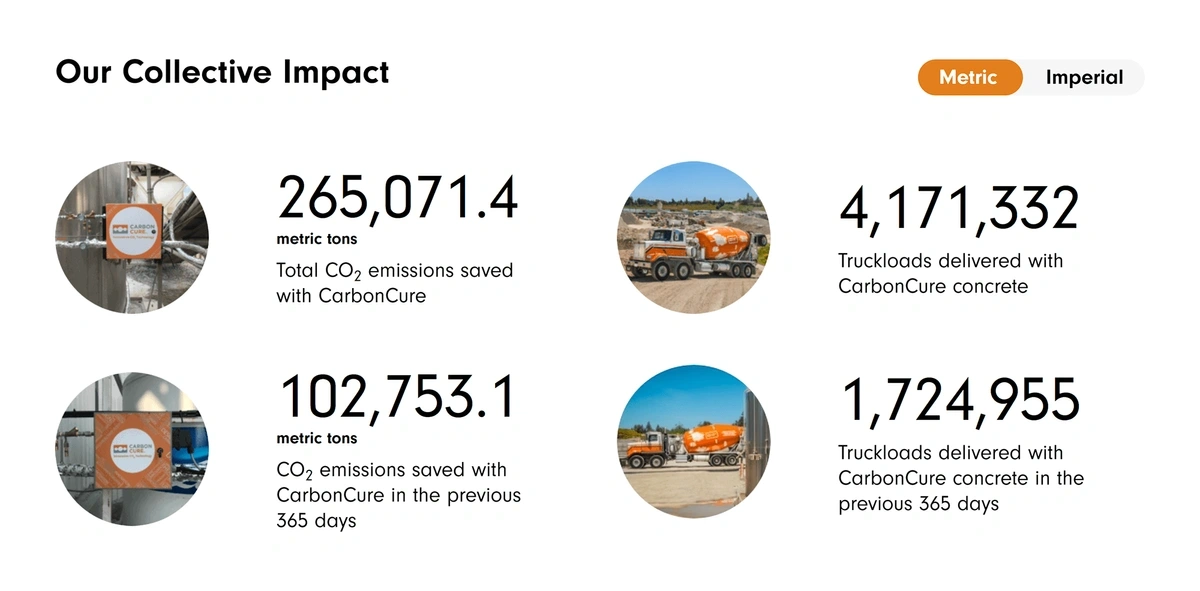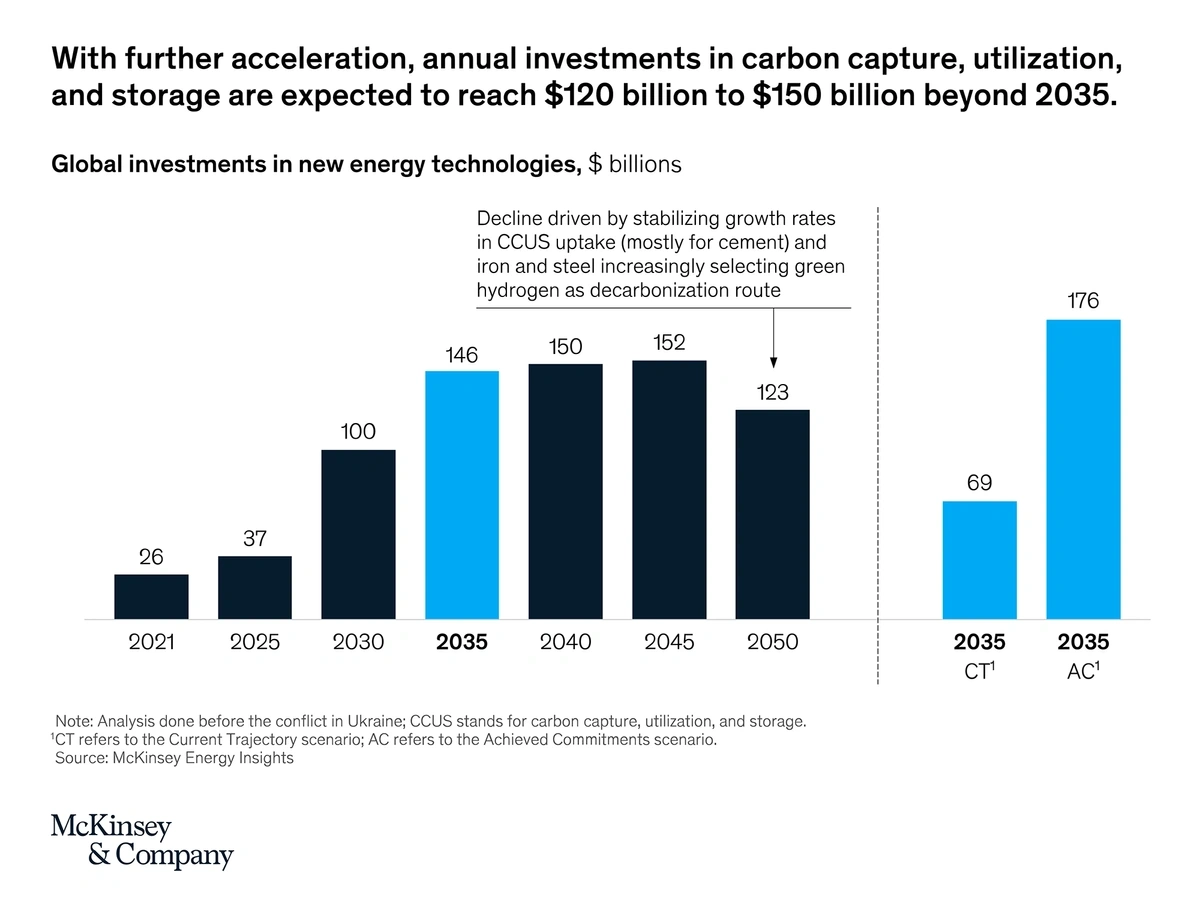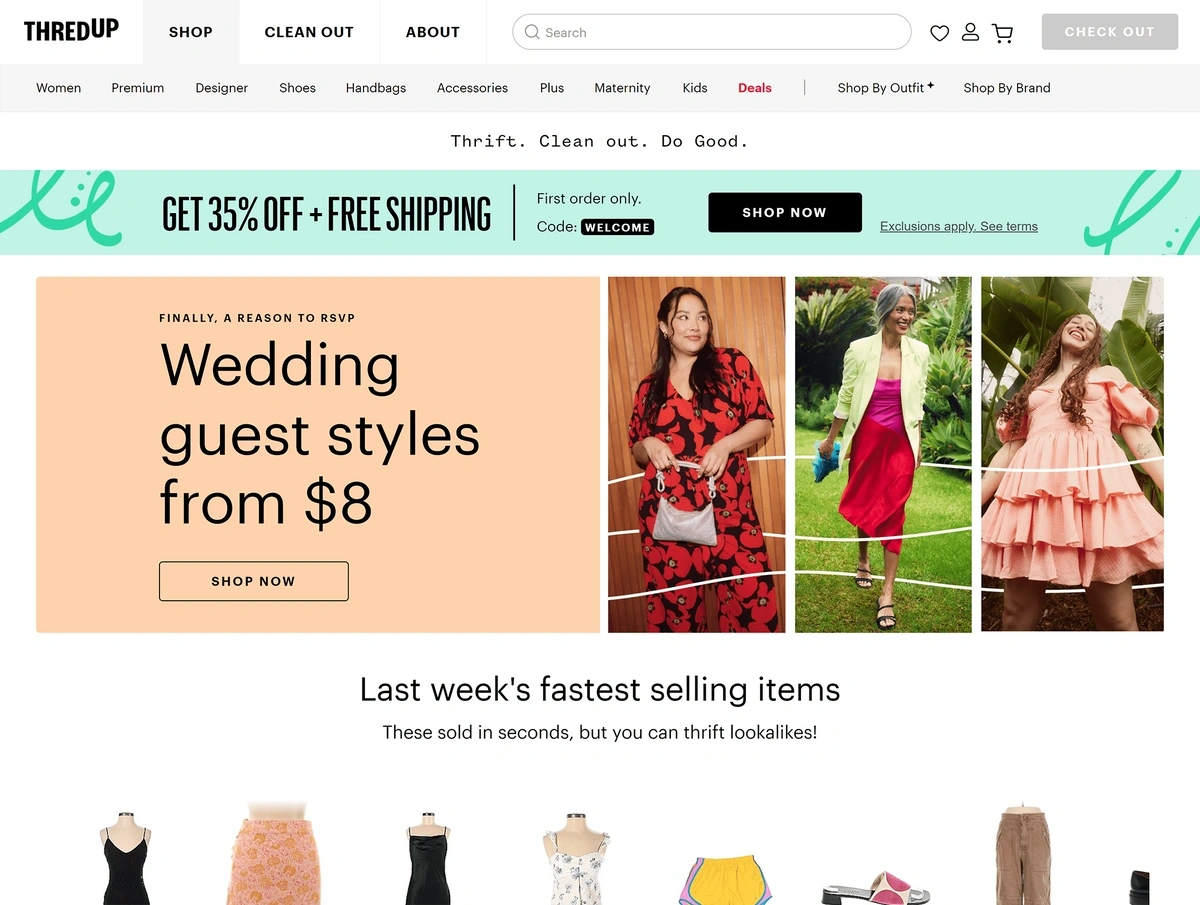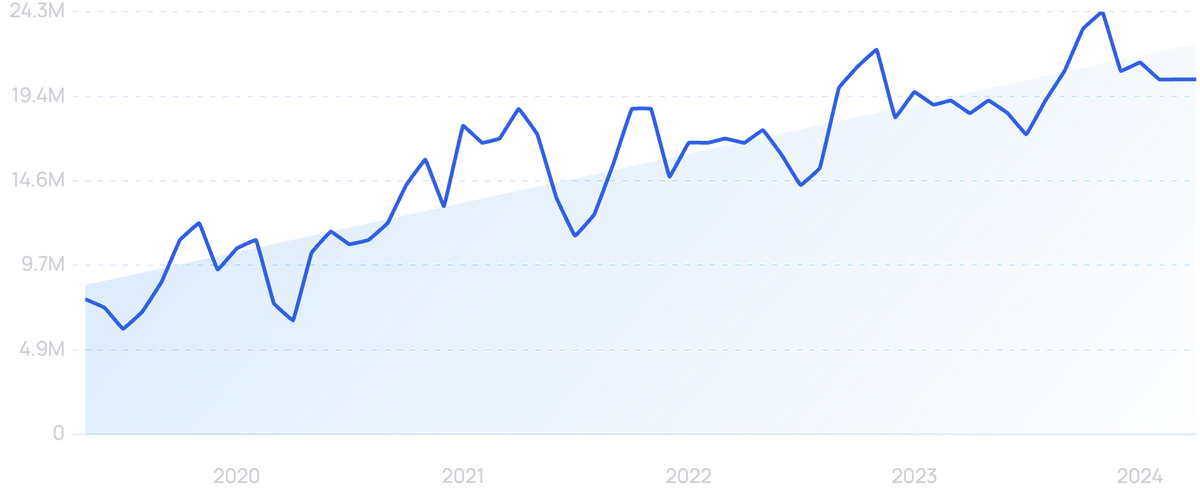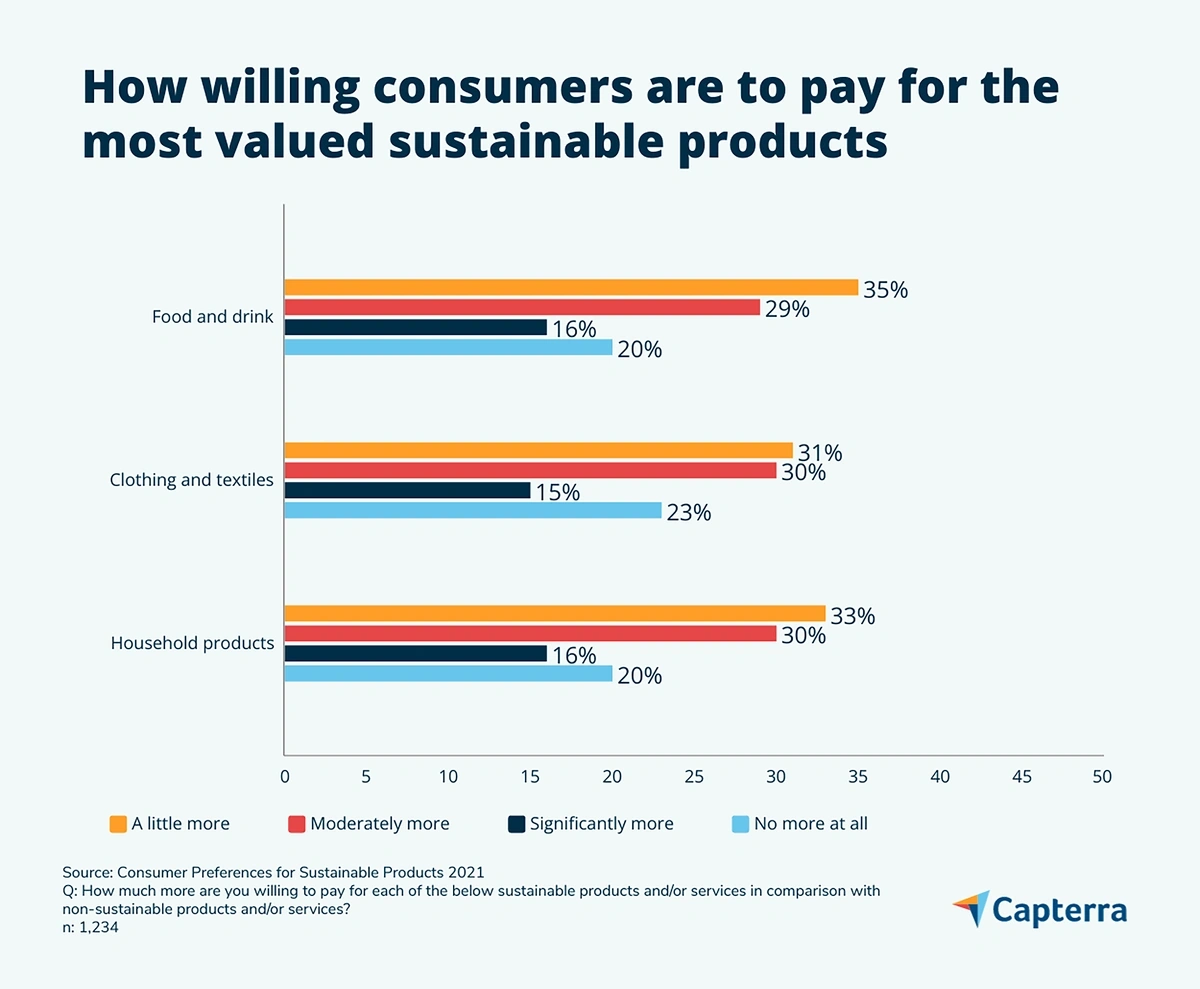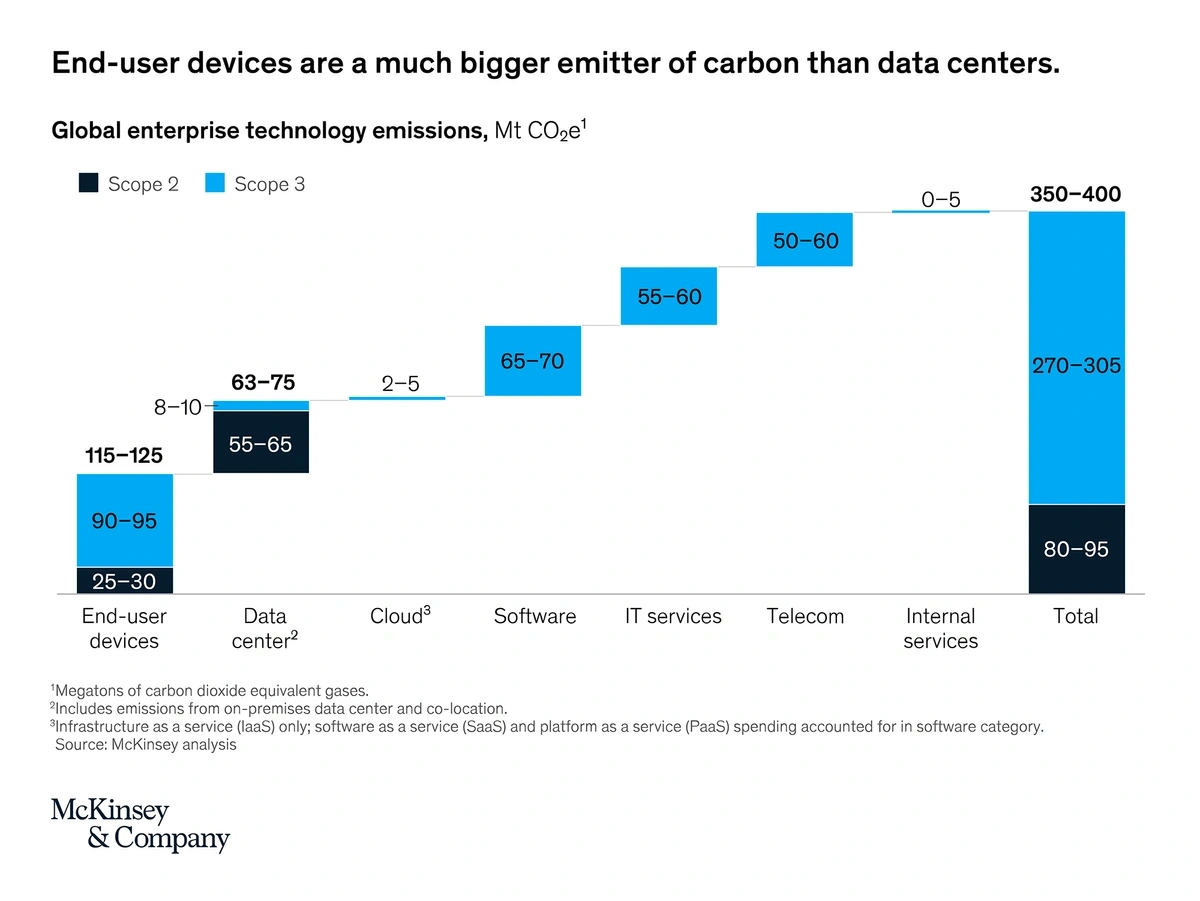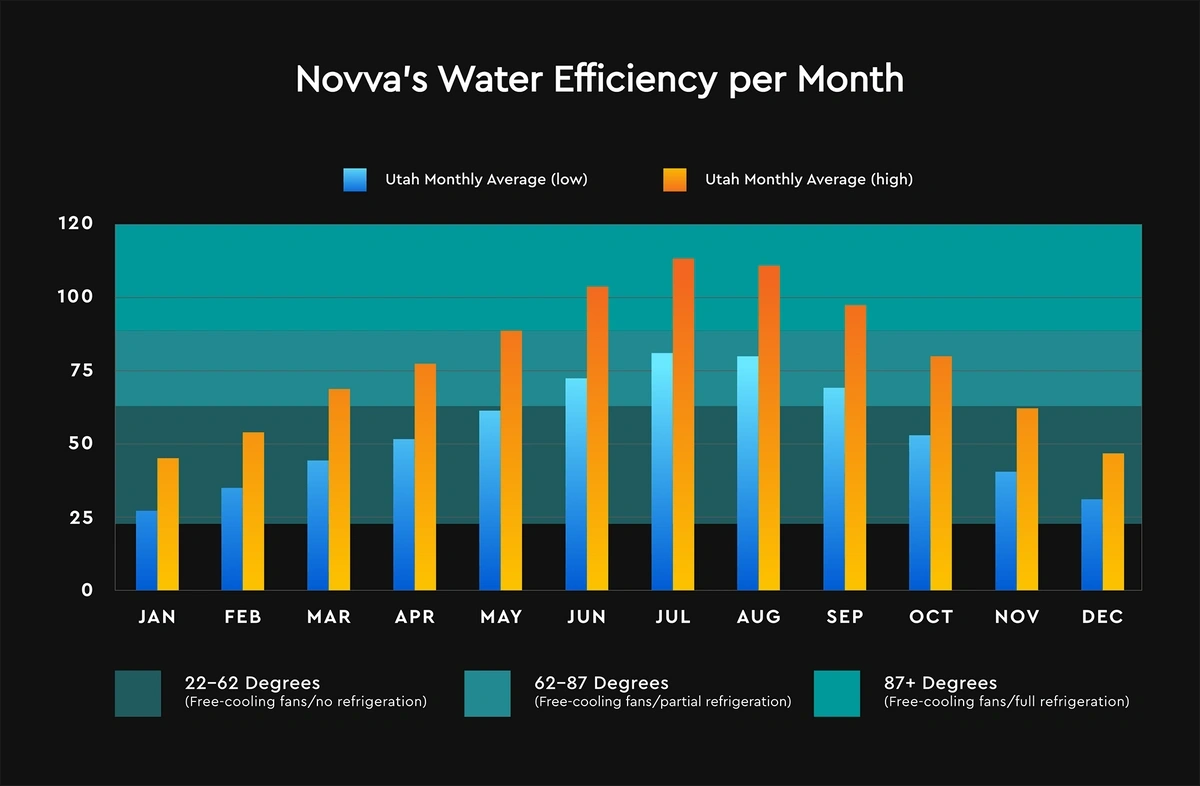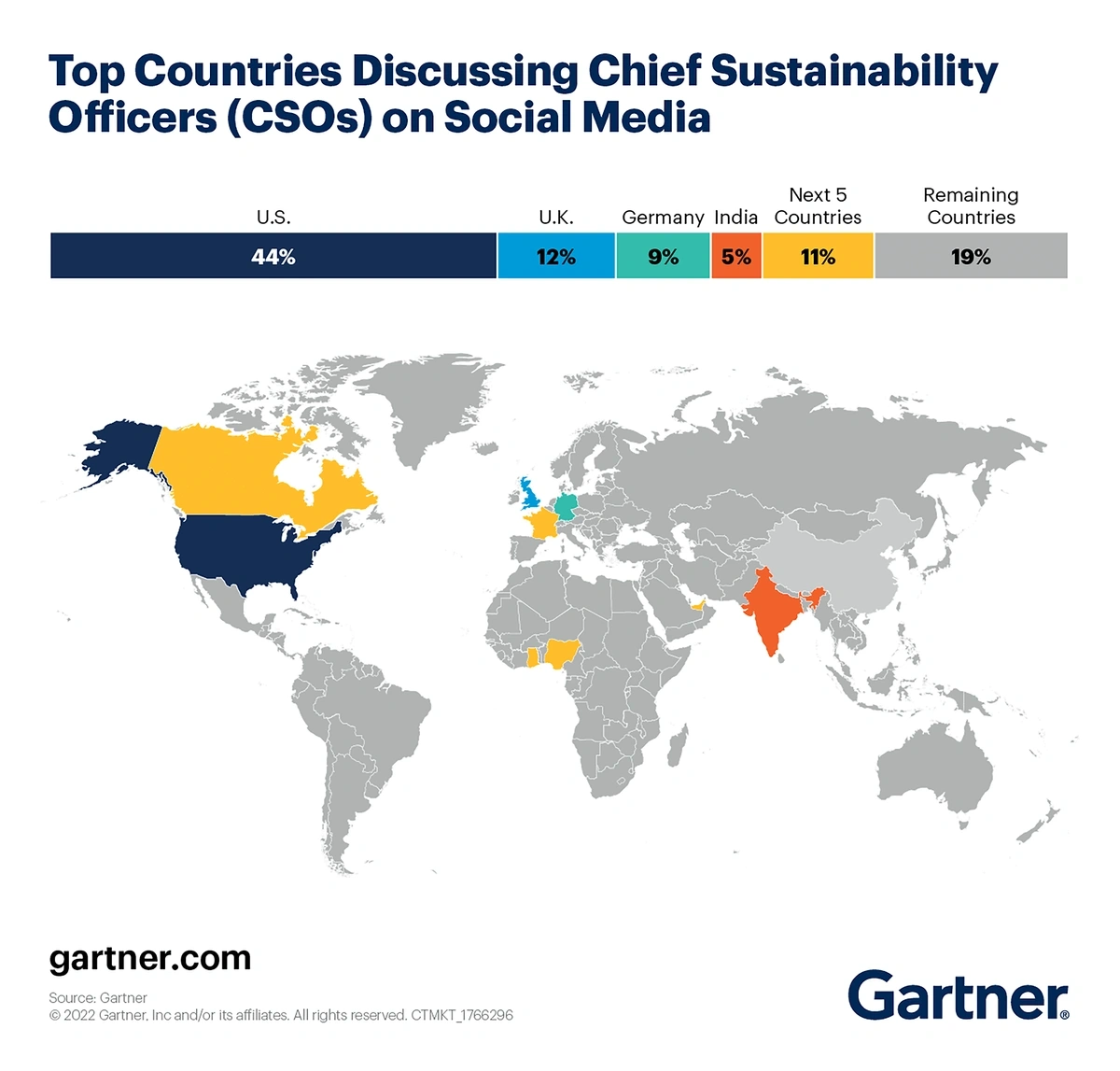
The 12 Top Sustainability Trends In 2024
You may also like:
From governments to Fortune 500 companies, sustainability is on the top of everyone's agenda in 2024.
As a result, several movements toward a cleaner, greener tomorrow are accelerating rapidly.
With that, here are the top 10 global sustainability trends to know.
1. Renewables Increasingly Replace Coal
The latest Climate Watch data highlight that overall energy usage contributes to 73.2% of global greenhouse gas emissions.
This is far and away the highest contributor (with the second-highest being agriculture at 18.4%).
So, it comes as no surprise that energy generation has seen the highest levels of interest and progress in terms of sustainable solutions.
The goal is to hit net zero energy. This means that total energy consumption is offset by the total renewable energy production.
In fact, in the past year, we have seen record growth in renewable energy sources.
Environment America reported that renewables provided 18% of total electricity generation in 2015, but that number jumped to 24% in 2020 and to 27% in 2022.
Renewables account for close to 100% of retail electricity sales in a few western states.
In fact, electricity produced by renewables surpassed coal in the United States for the first time in 2022.
The use of solar and wind power nearly doubled the levels that had been predicted.
In addition, wind energy continues to be an important source of energy, accounting for more than 10% of total renewable energy consumption in the US in 2023.
There are nearly 70,000 wind turbines operating across the country.
Wind power continues to be a critical source of renewable energy.
Globally, solar and wind were responsible for 12% of the world’s power. That’s up from 10% in 2021.
Renewables show no signs of slowing.
By 2050, experts say they’ll account for 42% of the United States’ electricity generation.
2. Green Hydrogen Shows Promise
Another technology with rapidly mounting interest is “green hydrogen” — hydrogen fuel that is synthesized with energy from low-carbon sources such as wind and solar.
Search volume for “green hydrogen” is up more than 1,117% in the past 5 years.
The cost of green hydrogen has been steadily decreasing in recent years. Because of this, the market is expected to grow at a CAGR of nearly 40% through 2030, landing at a value of $60.56 billion.
3. Nuclear Power Makes a Comeback
Meanwhile, demand for nuclear power is on the rise again after a decade-long plateau in growth.
The United States has 92 nuclear reactors and officials are continuing to run them well beyond their average 40-year lifespan. In fact, the average age of the reactors is 42 years.
The US is dedicated to this type of sustainable energy and has promised to direct $6 billion in subsidies to the sector in the coming years.
The Diablo Canyon nuclear power plant is located near Avila Beach, California.
A new nuclear reactor was built in Georgia and came online in March 2023. Another reactor on the same site will be ready in early 2024.
In addition, a 2022 study from the US Department of Energy found that nearly 400 existing coal-powered plants could be converted to nuclear power.
Reusing the equipment at these plants for nuclear purposes instead of building from scratch would save up to 35% in construction costs.
The transition could increase the amount of nuclear energy produced in the US from 95 GW to 250 GW.
The push for nuclear power is getting help from the private sector, too.
X-energy, a nuclear reactor engineering company, has its sights set on building small, modular nuclear reactors that could be used in various locations like industrial plants and rural towns.
Search volume for “X-energy” is up 533% since 2019.
The company planned to install its Xe-100 high-temperature gas-cooled reactor at a Dow plant in 2023 in order to provide the building with clean energy.
In late 2022, the company announced it would merge with Ares Acquisition Corporation, a blank-check firm, in order to go public. The deal was worth $2 billion.
4. EVs Lead Clean Transportation Efforts
Transportation is considered a subsector of the energy industry and currently accounts for 27% of greenhouse gas emissions in the United States.
Globally, it’s responsible for 20.7% of carbon emissions.
In total, transportation accounts for more than 20% of carbon emissions.
The electric vehicle (EV) is leading the charge in the quest to decarbonize transportation.
In 2022, the EV market consisted of 34 car models. In Q1 of 2023, that number was up to 42.
Sales have skyrocketed too.
The first quarter of 2023 saw 44.9% more EV sales than in 2022.
EVs now account for 13% of the global automotive market.
The market share of EVs has grown more than 10% since 2019.
This puts into context why 18 out of the world’s 20 largest automotive manufacturers — that account for nearly 90% of global car sales — have switched or pledged to switch, either completely or significantly, to manufacturing EVs in the coming years.
Volvo has announced that it will sell only electric cars by 2030, while GM has pledged to switch to a zero-carbon portfolio by 2035.
Others with aggressive electrification plans include Ford, Volkswagen, and Stellantis — the giant joint venture between Fiat Chrysler and Peugeot.
Even leaders at the luxury brand Bentley, known for their gas-guzzling rides, have announced an all-electric model that will be released in 2025 with four other EV models to follow by 2029.
But there are some new players in the EV market too.
Take California-based Canoo, for example.
Search volume for “Canoo” spiked in 2021.
The startup EV manufacturer offers models for individuals as well as companies needing a delivery fleet.
In April 2023, Canoo announced a partnership that will allow them to open a 500,000-square-foot manufacturing facility in Oklahoma with the option to expand the site in the future.
Canoo is taking preorders on their lifestyle vehicles and pickup trucks.
It remains to be seen if this move can push Canoo’s stock price up.
Like many EV manufacturers, Canoo is struggling to commercialize their cars and optimize cash flow.
5. New Methods, Materials, and Tech Transform Construction
Data from the United Nations Environment Program indicate that building and construction contribute nearly 39% of the world’s carbon emissions.
In 2021, the sector put out 10 gigatons of carbon emissions. That was 5% higher than 2020 levels and 2% more than the pre-pandemic peak reached in 2019.
Search volume for “construction emissions” has jumped 148% in the past 5 years.
The Paris Agreement set the targets to reduce energy intensity for buildings by 30% per square meter by 2030 and to have the entire construction industry at net zero by 2050.
The gap between the desired decarbonization changes and the actual performance of the construction industry swelled from 6.6 points in 2019 to 9 points in 2021.
Environmental experts say the industry is way off-track when it comes to achieving these climate goals.
If the industry doesn’t invest in critical changes now, emissions are predicted to double by 2050.
Many in the industry are evolving into new practices, though.
A McKinsey survey reported that 53% of construction industry executives say they expect the sustainability trend to accelerate in the coming years, and 10% say they are invested in sustainability solutions since the pandemic.
Greener construction methods such as prefabrication, modularization, and digitalization (building information modeling, for example) are paving the way for this change.
Instead of building structures on-site from scratch, these approaches enable elements to be manufactured separately off-site and combined with customization options once they arrive at the building site, resulting in as much as 30% lower carbon footprints.
Modular construction reduces the amount of wasted materials and results in a safer construction site.
The buildings also take up to 50% less time to build.
A loose framework for a construction schedule shows substantial cost-savings are realized when using modular construction.
Although modular construction accounts for only 4% of residential construction and 5.5% of commercial builds in the US, it’s utilized in 45% of projects in Sweden and 15% of projects in Japan.
Modular construction is becoming especially popular in the healthcare sector where demand for space has reached an all-time high.
Healthcare buildings along with hotels and motels are two areas of opportunity for modular construction.
This type of construction is a logical fit for hospitals, which need to build several of the same patient rooms in succession. It also requires fewer construction personnel to be on-site, which lowers safety and infection concerns for patients.
Beyond new construction methods, industry leaders are also coming up with new materials aimed at creating a more sustainable future.
Newer, lower-footprint materials, such as cross-laminated timber in place of steel, ethylene tetrafluoroethylene (ETFE) in place of glass, mycelium (a type of fungus spore) instead of bricks, and advanced materials such as graphene to reduce concrete usage, all promise to lower the environmental impact and change how structures are built.
The use of ETFE is beneficial for the environment in several ways.
The material is resistant to damage caused by UV light, pollution, and overall weathering, so its life expectancy is 50+ years.
It’s lightweight, so it’s easy to transport and needs a less extensive framework to support it.
The material has become the first choice for the roofing in sports stadiums.
US Bank Stadium in Minneapolis was the first to use ETFE in 2016, but since then many others have followed suit.
SoFi Stadium in Inglewood, California, recently built the largest ETFE roof to date — 67,000 tons of ETFE membrane covering more than 3 million square feet.
The ETFE roof allows natural light to enter the stadium.
In the midst of pressure from customers and regulators, many construction companies are reiterating their pledge to reduce emissions and provide a sustainable way forward.
An analysis from International Construction showed that all of the top 50 construction companies across the globe have made some form of commitment to the environment.
Fluor Corporation, a construction engineering firm, set a goal to hit net zero for both scope 1 and 2 emissions by the end of 2023.
Fluor’s Amsterdam office invests in sustainability by participating in programs aimed at reducing food waste on-site.
The company has invested in EVs, solar panel installations, recycling, and tree planting at offices and locations around the world.
In addition, Reuters named Flour to its Top 100 Energy Transition Innovators in 2022.
6. Biodiversity Pledges Gain Momentum
When discussing sustainability, topics like emissions and pollution are heard most often. But the conversation surrounding biodiversity loss and sustaining nature is growing in volume.
The World Economic Forum’s Global Risks Report ranks biodiversity loss as one of the top five threats facing humanity in the next decade.
Research from the World Economic Forum suggests biodiversity loss has the potential to have the third greatest impact on society, ranked right behind weapons of mass destruction.
Their research suggests that more than half of the world’s GDP ($44 trillion) is either moderately or highly dependent on nature and what it provides for businesses and mankind.
Other analysts say the loss of biodiversity is already costing the global economy more than $5 trillion a year.
In the past few months, the term “nature positive” has emerged as a topic that many are demanding be promoted on the same level as “carbon neutral.”
Search volume for “nature positive” over the past 5 years.
Businesses across the globe are in the early stages of committing to becoming nature-positive.
A McKinsey analysis of Fortune Global 500 companies shows nearly 40% have acknowledged actions to decrease forest and seabed loss, 56% have acknowledged actions to lessen biodiversity loss, and 21% have acknowledged actions to find solutions for nutrient pollution.
Commitments to maintaining natural habitats and resources are gaining momentum but still lag behind climate change pledges.
The analysis found that the transportation industry has set the most nature-related targets. The agriculture industry came in second.
Another analysis found that, between 2021 and 2022, the beverage industry saw a 9.4-point increase in the share of companies that have made nature-related pledges — from 3.1% of companies to 12.5%.
Governments are acting, too.
At the UN’s COP15 biodiversity summit in December 2022, 196 countries signed on to a global biodiversity framework that seeks to protect ecosystems, wild species, and natural resources.
The framework presents 23 goals related to preserving the natural world.
Deforestation is a major factor in biodiversity loss.
It also plays a major role in reaching net zero since a single mature tree removes about 50 pounds of carbon from the air per year.
In 2022, the Forest Declaration Assessment found that the world has experienced a net loss of more than 100 million hectares of forest in the past two decades.
Researchers say the Amazon rainforest is at a “tipping point,” a critical threshold after which the loss of portions of the forest would have profound impacts on the planet.
About 17% of the forest has been destroyed in the past 50 years.
The dangers of deforestation led Global Canopy to publish the first Forest 500 in 2014 as a listing of the top companies in terms of forest-friendly actions.
Nestle came in at number two on the list in 2022, scoring a 10/10 for their overall approach to remedying deforestation.
The company committed to working toward zero deforestation in 2010 and has achieved a 99% success rate across several of its major supply chains.
Their palm oil supply chain still lags behind, only achieving a 95.6% success rate.
The palm oil supply chain is vast and complex.
7. Greener Packaging Options Go Mainstream
After energy usage, packaging is one of the most damaging aspects of human behavior that is affecting the health and the future of the planet.
The ubiquitous plastic cover and its other packaging cousins are everywhere. They’ve even made their way to some of the most remote corners of the world.
But in the last few years, the number of countries enacting strict regulations on single-use plastics has more than doubled.
Canada and India are the latest countries to begin to phase out this type of packaging.
In all, 77 counties have a total or partial ban on plastic bags and 175 counties have committed to a UN resolution to end plastic pollution by the end of 2024.
Numerous countries are banning plastic bags.
Companies are also changing practices to keep pace with these regulatory trends.
Cometeer is a coffee company that uses liquid nitrogen to flash-freeze coffee and packages the frozen coffee in aluminum capsules.
Search volume for “Cometeer” jumped in 2022.
To drink, individuals simply pour the concentrate into a mug of hot water or pour the melted liquid into milk.
Cometeer’s frozen coffee pods have a 24-month shelf life.
All of Cometeer’s packaging and shipping materials are recyclable. The company even composts the coffee grounds they use on-site.
In another example, Common Heir is a beauty company devoted to sustainability.
Each dose of their serum comes in a plant-based capsule. All of their packaging is plastic-free and readily biodegradable.
Plus, their shipping process is carbon neutral.
Common Heir offers single-use capsules made of plant-based materials that are biodegradable.
Other companies are prompting consumers to reuse packaging when buying new products.
In 2022, Lidl, a German grocery store chain, announced they’d be partnering with Algramo, a tech company facilitating “pay by the gram” purchases of things like laundry soap and liquid cleaners.
Here’s how it works: A touchscreen filling station will sit on the shelf. Consumers pick up a pouch, place it under the dispenser, and have it filled. The consumer brings the pouch back when they need a refill.
A laundry detergent refilling station created by Algramo.
Overall, the sustainable packaging market was valued at $229.46 billion in 2021 and is forecast to grow at 7.5% annually, crossing $409.2 billion by 2030.
8. CCUS Promises to Bridge the Carbon Gap
Carbon Capture, Utilization, and Storage (CCUS) refers to a set of technologies that capture carbon dioxide from industrial or other emissions, and either upcycle it by using it for other processes or store it in geological formations to prevent it from getting into the atmosphere.
Search volume for “CCUS” is up more than 700% in the past 5 years.
The Intergovernmental Panel on Climate Change (IPCC) found that even with the widespread adoption of green energy such as wind and solar, much more needs to be done to drastically reduce the total amount of carbon dioxide in the atmosphere and mitigate climate change.
In fact, CCUS is the only solution to reduce emissions from the cement industry, which is responsible for 7% of global emissions, and the most cost-effective way to capture carbon from iron and steel manufacturing.
CCUS is also a critical element in the production of low-carbon hydrogen.
The number of new CCUS projects underway grew by 44% in 2022 as 61 projects were announced. That brings the total number of CCUS facilities to 196 — 30 are currently in operation.
Carbon capture projects have been around for a number of years, but interest and development is now skyrocketing.
When all of these are operational, they’ll be able to capture a total of 244 million metric tons of carbon each year.
The Inflation Reduction Act of 2022 included carbon capture incentives, as well. For example, the credit for carbon captured from industrial or power generation facilities that are stored in geologic formations was increased from $50 per ton to $85 per ton.
The act also extended the timeline for CCUS construction projected qualifying for credits to January 2033.
A promising application of carbon capture is seen in the area of building materials. CCUS is instrumental in forming lighter and stronger concrete blocks thanks to carbon sequestration.
CarbonCure is a startup applying this technology by injecting captured carbon dioxide into concrete, making it stronger and also allowing lower cement demands for a given structure.
CarbonCure’s technology is making the concrete industry more sustainable.
McKinsey estimates investments in the CCUS space will grow from $26 billion in 2021 to $146 billion in 2035.
Investments in CCUS could reach as high as $176 billion by 2035.
9. Fast Fashion Goes Green
Bloomberg reports that approximately 11.3 million tons of textile waste go into landfills each year in the United States.
Their report goes on to cite a few other statistics that are a nightmare in terms of the sustainability of the fashion industry:
The industry accounts for up to 10% of carbon dioxide output worldwide.
It’s also responsible for 20% of all of the plastic created in the world each year, most of which comes in the form of polyester.
The use of polyester, a type of plastic manufactured from petroleum, in fashion has drastically outpaced the use of cotton.
The term “fast fashion” describes the fashion industry’s practice of releasing new lines much more frequently than they used to. Consumers buy the new items and throw away their old textiles, creating a cycle in which more and more clothing is produced and eventually thrown in the landfill.
Search volume for “fast fashion” has increased nearly 223% since 2019.
In fact, today’s fashion brands are making twice as much clothing as they did in 2000.
And, 50 billion pieces of clothing are thrown away within just one year of being made.
Although some in the industry have staked their entire brand on the appeal of fast fashion (think SHEIN, Forever 21, and H&M) others have begun to take action.
Levi’s has a “Buy Better, Wear Longer” campaign, Patagonia sources a large portion of its materials from recycled fabrics, and Eileen Fisher is taking back used clothing in order to create one-of-a-kind artwork.
The second-hand market for apparel is also booming.
Estimates show the market value will hit $82 billion by 2026.
ThredUp continues to be a powerhouse brand in the second-hand market.
ThredUp’s second-hand fashion platform offers budget brands as well as luxury items.
ThredUp has been a resale platform for its entire history, but recently, the company has expanded to offer Resale-as-a-Service to fashion brands.
They’re currently partnering with 42 brands like American Eagle, Kate Spade, Madewell, and Athleta.
Vinted is a newer thrift option for fashion consumers.
The online platform for second-hand apparel became Lithuania’s first billion-dollar company in 2019, and it’s gaining popularity across Europe and in the United States.
Search volume for “Vinted” is up 163% over the last 5 years.
The company hit 45 million users and a $45 billion valuation in 2021.
The brand’s most recent climate impact report analyzed nearly half a billion transactions on the marketplace and found a net savings in carbon emissions of nearly 453 kilotones.
Vinted is dedicated to sustainable fashion.
In all, estimates show second-hand clothing will make up 10% of the apparel market by 2025.
10. Rising Demand for Sustainable Foods
The production of food has long been an inefficient, resource-intensive task.
Nearly 70% of the world’s freshwater usage is dedicated to food production.
And, food production is responsible for 37% of global greenhouse gas emissions.
An Oxford study from 2022 showed that red meat, fish, chicken, and dairy products are the least sustainable foods to produce.
The Water Footprint Network echoes that.
Their research shows it takes 15,415 liters of water to produce 1 kg of beef.
Data from the Water Footprint Network shows vegetables are the most sustainable food to produce.
Food waste is a problem too, especially in America where the average person wastes a pound of food every day.
Another critical factor related to food sustainability is the rising population of Earth.
Experts estimate that if current practices continue we’ll need to double the amount of crops we grow by 2050. That’s all to feed the 9 billion people that are expected to be living at that time.
The path forward, according to nearly all environmental experts, is to decrease the consumption of resource-intensive foods and reduce food waste.
And many grocery shoppers are thinking the same way.
Recent research shows 52% of consumers want to know the impact that their food choices are having on the planet and 30% are already purchasing sustainable foods.
Nearly 30% of shoppers are even willing to pay “moderately more” for sustainable foods and 16% are willing to pay “significantly more”.
Many grocery shoppers are willing to pay more for sustainable food.
Today’s consumers are seeing a wealth of new sustainable food products on the shelves.
Lentils are one type of sustainable food that’s trending.
They have more protein and iron than most meats, and they also contain several vitamins and minerals.
Plus, growing them is actually good for the environment.
Lentil plants contain a special bacteria that’s able to capture nitrogen in the air and convert it to a plant-ready form of nitrogen thereby eliminating the need for hazardous fertilizers.
Retailers report seeing a spike in interest in lentils during the pandemic.
One company saw sales jump by 860% and sales remain high.
Aside from the usual dried lentils, shoppers are also seeing lentils roasted with salt as a crunchy snack, lentils as the main ingredient in noodles, and lentil flour blended with potatoes in chips.
Tolerant Organic and several other brands now sell lentil pasta as a sustainable option.
Alpha Foods is one brand using lentils and other plant-based proteins in their products.
Search volume for “Alpha Foods” is up more than 95%.
The company offers a wide variety of products like breakfast sandwiches, chik’n nuggets, and burritos.
Alpha Foods closed its most recent funding round in 2020 with a total of $40.4 million raised.
11. Addressing IT’s Impact On The Environment
All electronics, from individual smartphones to massive server farms to newly released AI systems, impact the environment.
The IT sector as a whole is responsible for somewhere between 1.8% and 3.9% of global greenhouse gas emissions.
Data centers are notoriously bad for the environment.
The average data center uses up to 50x times the amount of energy as a typical office of a comparable size. Added up, data centers account for 2% of the entire electricity usage in the United States.
But as bad as that sounds, end-user devices around the world generate between 1.5 and 2 times more carbon than data centers.
End-user devices generate carbon through the manufacturing process of the device itself and through the manufacturing of semiconductor chips that power the devices.
To mitigate these effects, the United Nations’ International Telecommunications Union has released targets for sustainable computing.
The UN’s targets have the goal of reducing IT emissions by 45% by 2030.
In addition, the United States National Science Foundation recently issued a call for proposals to advance sustainable computing.
Many in the private sector are already coming up with sustainable solutions.
Some server manufacturers are now creating modular units where the host processing unit can be replaced without throwing out the entire unit.
So instead of purchasing new equipment every year or two (as is the norm), data centers can extend the life of the servers and cut carbon emissions associated with the manufacturing of this equipment.
Novva Data Centers, a sustainability-focused IT company, is deploying data centers in the Southwest US.
Novva’s cooling utilizes ambient desert air and a closed-loop chiller.
Novva's cooling system is uniquely sustainable because it doesn’t rely on an incoming flow of water. That alone saves up to 300 million gallons of water per year.
Instead, the company pumps in between 35,000 to 75,000 gallons of water to start up the data center and seals it in.
Intake of outside air and a complex airflow system is also responsible for a large part of the cooling. (Research shows that simply implementing variable speed fans can decrease power consumption by 20%.)
Novva data centers are able to use free-cooling fans with no refrigeration for a considerable portion of the year.
12. Chief Sustainability Officers Handle ESG Reporting Pressures
The number of companies submitting sustainability reports has grown steadily in the last decade.
Search volume for “ESG reporting” has jumped dramatically in the last year.
In 2022, the Governance & Accountability Institute found that sustainability reporting had reached a record high.
The number of companies in the Russell 1000 publishing a report had jumped 16% in just one year and reached a new high of 81% of companies.
The number of companies from the S&P 500 Index that file sustainability reports rose to 96%.
Only 4% of companies in the S&P 500 Index did not issue a sustainability report in 2021.
Although participation in this practice is growing, reporting sustainability efforts is often an inconsistent and confusing process.
Many enterprises are simply checking off boxes in their approach to reporting.
In addition, there are often competing metrics and confusion about what exactly they should be reporting.
Business experts see this trend shifting, though.
Some companies are looking to drill down into their sustainability data, analyze it, and use that information to drive profits.
In addition, stakeholders, investors, and new regulations are all demanding information related to a company’s sustainability goals.
A sample ESG report from Unilever.
To that end, many are hiring leaders for positions related to ESG reporting and impact analysis.
Take the chief sustainability officer role, for example.
Search volume for “chief sustainability officer” has increased by more than 300% in recent years.
This person is tasked with completing all ESG reporting and regulatory documentation, as well as proposing new ESG policies, keeping up with stakeholder relationships, and driving transformational change in the organization.
A survey from PwC showed 3 times as many companies were hiring chief sustainability officers in 2021 compared to 2020.
Deloitte expects the trend to continue well into the future.
The conversations on social media support this prediction.
Gartner reports that the volume of social media conversations mentioning the term “chief sustainability officer” has doubled since 2021.
The topic of chief sustainability officers is discussed on social media most in the US, but the UK and Germany are also seeing an uptick.
The appointment of chief sustainability officers has recently been seen across industries.
For example, the National Pork Board announced the organization’s first-ever chief sustainability officer in April 2023. Jamie Burr, a former director of environmental compliance at Tyson, was hired for the position.
The University of Minnesota appointed its first chief sustainability officer in May 2022, and makeup giant L’Oreal did the same in July 2022.
Pinterest followed suit in early 2023 by promoting the company’s chief communications officer, LeMia Jenkins Thompson, to the role.
Conclusion
This rising tide of interest in sustainability has been accompanied by an explosion of activity and innovation, with energy, mobility, construction, finance, packaging, and carbon capture leading the biggest shifts toward a healthier planet.
The awareness and demand for sustainability is growing among consumers, as well — 78% of American consumers say a sustainable lifestyle is important.
In addition, the value of the “green economy” is projected to be worth more than $10 trillion by 2050.
Overall, this is a massive trend that is nearly impossible to ignore.
Stop Guessing, Start Growing 🚀
Use real-time topic data to create content that resonates and brings results.
Exploding Topics is owned by Semrush. Our mission is to provide accurate data and expert insights on emerging trends. Unless otherwise noted, this page’s content was written by either an employee or a paid contractor of Semrush Inc.
Share
Newsletter Signup
By clicking “Subscribe” you agree to Semrush Privacy Policy and consent to Semrush using your contact data for newsletter purposes
Written By


Josh is the Co-Founder and CTO of Exploding Topics. Josh has led Exploding Topics product development from the first line of co... Read more

